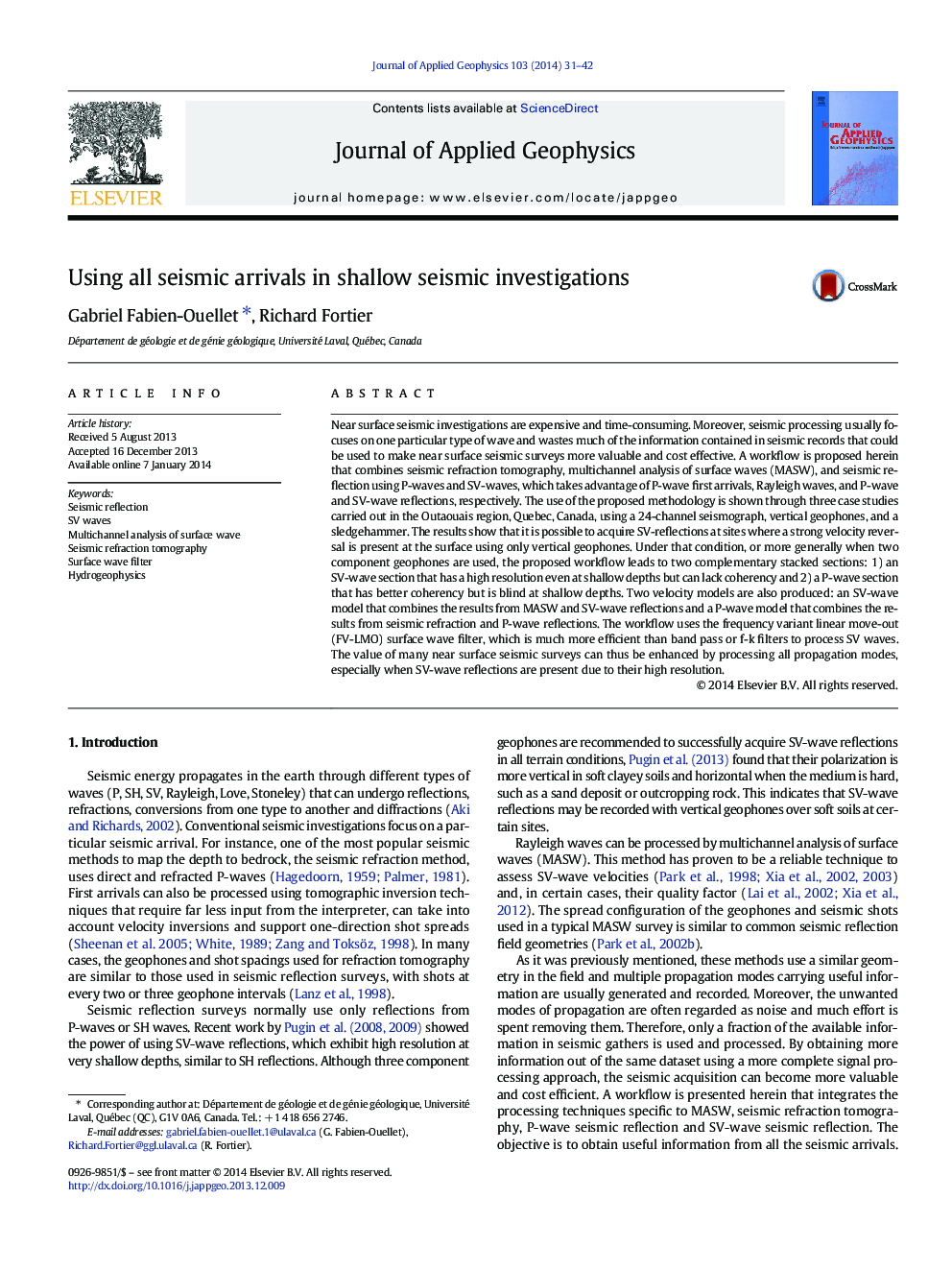| کد مقاله | کد نشریه | سال انتشار | مقاله انگلیسی | نسخه تمام متن |
|---|---|---|---|---|
| 4740293 | 1641148 | 2014 | 12 صفحه PDF | دانلود رایگان |
• Using all seismic propagation modes leads to a more complete interpretation
• In our data, SV seismic reflection has a resolution of the order of 2 m in soil
• SV seismic reflection using vertical geophones is possible in particular conditions
• The frequency variant linear move-out filter is efficient at removing surface waves
Near surface seismic investigations are expensive and time-consuming. Moreover, seismic processing usually focuses on one particular type of wave and wastes much of the information contained in seismic records that could be used to make near surface seismic surveys more valuable and cost effective. A workflow is proposed herein that combines seismic refraction tomography, multichannel analysis of surface waves (MASW), and seismic reflection using P-waves and SV-waves, which takes advantage of P-wave first arrivals, Rayleigh waves, and P-wave and SV-wave reflections, respectively. The use of the proposed methodology is shown through three case studies carried out in the Outaouais region, Quebec, Canada, using a 24-channel seismograph, vertical geophones, and a sledgehammer. The results show that it is possible to acquire SV-reflections at sites where a strong velocity reversal is present at the surface using only vertical geophones. Under that condition, or more generally when two component geophones are used, the proposed workflow leads to two complementary stacked sections: 1) an SV-wave section that has a high resolution even at shallow depths but can lack coherency and 2) a P-wave section that has better coherency but is blind at shallow depths. Two velocity models are also produced: an SV-wave model that combines the results from MASW and SV-wave reflections and a P-wave model that combines the results from seismic refraction and P-wave reflections. The workflow uses the frequency variant linear move-out (FV-LMO) surface wave filter, which is much more efficient than band pass or f-k filters to process SV waves. The value of many near surface seismic surveys can thus be enhanced by processing all propagation modes, especially when SV-wave reflections are present due to their high resolution.
Journal: Journal of Applied Geophysics - Volume 103, April 2014, Pages 31–42
